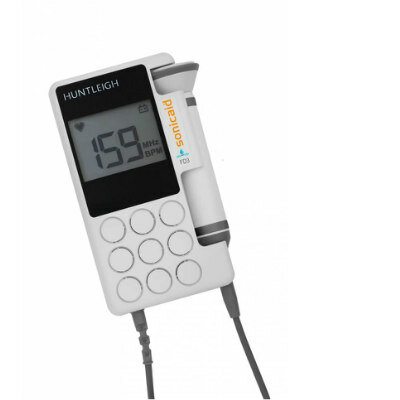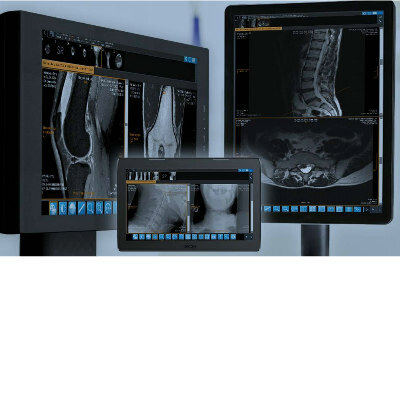NIH Clinical Center Releases CT Image Dataset
|
By MedImaging International staff writers Posted on 28 Aug 2018 |

Image: Lesion embedding visualized on the DeepLesion test set (Photo courtesy of NIH).
DeepLesion, a large-scale dataset of CT images compiled by the U.S. National Institutes of Health (NIH, Bethesda, MD, USA) Clinical Center, has been made publicly available to help the scientific community improve detection accuracy of lesions. DeepLesion includes a dataset with 32,735 lesions in 32,120 CT slices from 10,594 studies of 4,427 unique anonymized patients whose CT images were sent to radiologists at the NIH Clinical Center for interpretation.
The NIH radiologists measured and marked clinically meaningful findings with the aid of a complex electronic bookmark tool that provides arrows, lines, diameters, and text that can tell the exact location and size of a lesion so experts can identify growth or new disease. The bookmarks, including a range of retrospective medical data, were used to develop the DeepLesion dataset. Unlike most lesion medical image datasets currently available, which can only detect one type of lesion, the database contains all critical radiology findings, such as lung nodules, liver tumors, enlarged lymph nodes, and so on.
The dataset released is large enough to train a deep neural network, which could enable the scientific community to create a large-scale universal lesion detector with one unified framework that could eventually serve as an initial screening tool for other specialist systems trained on certain types of lesions. In addition, DeepLesion marks multiple findings in one CT exam image, allowing researchers to analyze their relationship to make new discoveries, enabling whole body assessment of cancer burden. DeepLesion was introduced in a study published on July 20, 2018, in the Journal of Medical Imaging.
“Vast amounts of clinical annotations have been collected and stored in hospitals’ picture archiving and communication systems. These types of annotations, also known as bookmarks, are usually marked by radiologists during their daily workflow to highlight significant image findings that may serve as reference for later studies,” said senior author Ronald Summers, MD, PhD, and colleagues. “We propose to mine and harvest these abundant retrospective medical data to build a large-scale lesion image dataset.”
“In the future, the NIH Clinical Center hopes to keep improving the DeepLesion dataset by collecting more data, thus improving its detection accuracy,” stated the NIH in a press release. “The universal lesion detecting capability will become more reliable once researchers are able to leverage 3D and lesion type information. It may be possible to further extend DeepLesion to other image modalities such as MRI and combine data from multiple hospitals, as well.”
Related Links:
U.S. National Institutes of Health
The NIH radiologists measured and marked clinically meaningful findings with the aid of a complex electronic bookmark tool that provides arrows, lines, diameters, and text that can tell the exact location and size of a lesion so experts can identify growth or new disease. The bookmarks, including a range of retrospective medical data, were used to develop the DeepLesion dataset. Unlike most lesion medical image datasets currently available, which can only detect one type of lesion, the database contains all critical radiology findings, such as lung nodules, liver tumors, enlarged lymph nodes, and so on.
The dataset released is large enough to train a deep neural network, which could enable the scientific community to create a large-scale universal lesion detector with one unified framework that could eventually serve as an initial screening tool for other specialist systems trained on certain types of lesions. In addition, DeepLesion marks multiple findings in one CT exam image, allowing researchers to analyze their relationship to make new discoveries, enabling whole body assessment of cancer burden. DeepLesion was introduced in a study published on July 20, 2018, in the Journal of Medical Imaging.
“Vast amounts of clinical annotations have been collected and stored in hospitals’ picture archiving and communication systems. These types of annotations, also known as bookmarks, are usually marked by radiologists during their daily workflow to highlight significant image findings that may serve as reference for later studies,” said senior author Ronald Summers, MD, PhD, and colleagues. “We propose to mine and harvest these abundant retrospective medical data to build a large-scale lesion image dataset.”
“In the future, the NIH Clinical Center hopes to keep improving the DeepLesion dataset by collecting more data, thus improving its detection accuracy,” stated the NIH in a press release. “The universal lesion detecting capability will become more reliable once researchers are able to leverage 3D and lesion type information. It may be possible to further extend DeepLesion to other image modalities such as MRI and combine data from multiple hospitals, as well.”
Related Links:
U.S. National Institutes of Health
Latest General/Advanced Imaging News
- New AI Method Captures Uncertainty in Medical Images
- CT Coronary Angiography Reduces Need for Invasive Tests to Diagnose Coronary Artery Disease
- Novel Blood Test Could Reduce Need for PET Imaging of Patients with Alzheimer’s
- CT-Based Deep Learning Algorithm Accurately Differentiates Benign From Malignant Vertebral Fractures
- Minimally Invasive Procedure Could Help Patients Avoid Thyroid Surgery
- Self-Driving Mobile C-Arm Reduces Imaging Time during Surgery
- AR Application Turns Medical Scans Into Holograms for Assistance in Surgical Planning
- Imaging Technology Provides Ground-Breaking New Approach for Diagnosing and Treating Bowel Cancer
- CT Coronary Calcium Scoring Predicts Heart Attacks and Strokes
- AI Model Detects 90% of Lymphatic Cancer Cases from PET and CT Images
- Breakthrough Technology Revolutionizes Breast Imaging
- State-Of-The-Art System Enhances Accuracy of Image-Guided Diagnostic and Interventional Procedures
- Catheter-Based Device with New Cardiovascular Imaging Approach Offers Unprecedented View of Dangerous Plaques
- AI Model Draws Maps to Accurately Identify Tumors and Diseases in Medical Images
- AI-Enabled CT System Provides More Accurate and Reliable Imaging Results
- Routine Chest CT Exams Can Identify Patients at Risk for Cardiovascular Disease
Channels
Radiography
view channel
Novel Breast Imaging System Proves As Effective As Mammography
Breast cancer remains the most frequently diagnosed cancer among women. It is projected that one in eight women will be diagnosed with breast cancer during her lifetime, and one in 42 women who turn 50... Read more
AI Assistance Improves Breast-Cancer Screening by Reducing False Positives
Radiologists typically detect one case of cancer for every 200 mammograms reviewed. However, these evaluations often result in false positives, leading to unnecessary patient recalls for additional testing,... Read moreMRI
view channel
PET/MRI Improves Diagnostic Accuracy for Prostate Cancer Patients
The Prostate Imaging Reporting and Data System (PI-RADS) is a five-point scale to assess potential prostate cancer in MR images. PI-RADS category 3 which offers an unclear suggestion of clinically significant... Read more
Next Generation MR-Guided Focused Ultrasound Ushers In Future of Incisionless Neurosurgery
Essential tremor, often called familial, idiopathic, or benign tremor, leads to uncontrollable shaking that significantly affects a person’s life. When traditional medications do not alleviate symptoms,... Read more
Two-Part MRI Scan Detects Prostate Cancer More Quickly without Compromising Diagnostic Quality
Prostate cancer ranks as the most prevalent cancer among men. Over the last decade, the introduction of MRI scans has significantly transformed the diagnosis process, marking the most substantial advancement... Read moreUltrasound
view channel
Deep Learning Advances Super-Resolution Ultrasound Imaging
Ultrasound localization microscopy (ULM) is an advanced imaging technique that offers high-resolution visualization of microvascular structures. It employs microbubbles, FDA-approved contrast agents, injected... Read more
Novel Ultrasound-Launched Targeted Nanoparticle Eliminates Biofilm and Bacterial Infection
Biofilms, formed by bacteria aggregating into dense communities for protection against harsh environmental conditions, are a significant contributor to various infectious diseases. Biofilms frequently... Read moreNuclear Medicine
view channel
New SPECT/CT Technique Could Change Imaging Practices and Increase Patient Access
The development of lead-212 (212Pb)-PSMA–based targeted alpha therapy (TAT) is garnering significant interest in treating patients with metastatic castration-resistant prostate cancer. The imaging of 212Pb,... Read moreNew Radiotheranostic System Detects and Treats Ovarian Cancer Noninvasively
Ovarian cancer is the most lethal gynecological cancer, with less than a 30% five-year survival rate for those diagnosed in late stages. Despite surgery and platinum-based chemotherapy being the standard... Read more
AI System Automatically and Reliably Detects Cardiac Amyloidosis Using Scintigraphy Imaging
Cardiac amyloidosis, a condition characterized by the buildup of abnormal protein deposits (amyloids) in the heart muscle, severely affects heart function and can lead to heart failure or death without... Read moreImaging IT
view channel
New Google Cloud Medical Imaging Suite Makes Imaging Healthcare Data More Accessible
Medical imaging is a critical tool used to diagnose patients, and there are billions of medical images scanned globally each year. Imaging data accounts for about 90% of all healthcare data1 and, until... Read more
Global AI in Medical Diagnostics Market to Be Driven by Demand for Image Recognition in Radiology
The global artificial intelligence (AI) in medical diagnostics market is expanding with early disease detection being one of its key applications and image recognition becoming a compelling consumer proposition... Read moreIndustry News
view channel
Bayer and Google Partner on New AI Product for Radiologists
Medical imaging data comprises around 90% of all healthcare data, and it is a highly complex and rich clinical data modality and serves as a vital tool for diagnosing patients. Each year, billions of medical... Read more





















